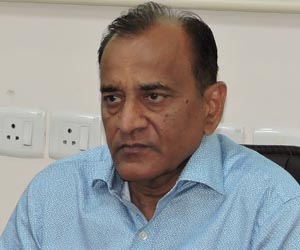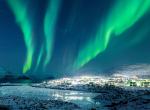Through its forceful intervention in political developments in Uttarakhand and Arunachal Pradesh, which were brought under President’s Rule, the Supreme Court affirmed that it would not let the letter and spirit of the SR Bommai versus Union of India verdict to die. The apex court went a step ahead to actually reinstall the regimes toppled. However, there was a technical difference between the two cases. While in the instance of Uttarakhand, the court, besides reinstating the Harish Rawat Government, asked it to prove its majority in the Assembly, it did not pass a similar latter order in the Arunachal Pradesh case. Rawat sailed through because the rebel Congress MLAs, who had been disqualified, could not vote. The Congress’s Nabam Tuki Government would have surely been defeated had the court ordered it to prove its strength, because the rebel MLAs had secured a stay on their disqualification and would have voted against Tuki. Taking advantage of the legal window, Tuki resigned days after re-assuming office, and the Congress chose a new leader who secured the support of the rebels in the House. Through this backdoor manoeuvre, the Congress managed to retain its hold in Arunachal Pradesh.
But all this apart, what remains the most relevant take is that Article 356 of the Constitution, which provides for President’s Rule, cannot be used for political ends, and that the courts will come down heavily against any attempt to subvert elected Governments through this provision. Perhaps this situation would not have come to pass had Governments at the Centre since independence heeded the advice of the framers of the Constitution. Chairman of the Drafting Committee of the Constitution, BR Ambedkar, had while referring to Article 356, said, “The proper thing we ought to expect is that such Articles will never be called into operation and they would remain a dead letter.” But Article 356 became a living letter within years of its passage. Jawaharlal Nehru to Indira Gandhi to the Janata Party Government to those that came thereafter, all of them merrily used the provision to dismiss regimes that were headed by opposition parties or on a rare occasion, by own parties, that were proving to be inconvenient. Article 356 has been invoked more than a hundred times since its inception. According to a Mint report, it has been used on 124 occasions (the maximum, 10 times, in small Manipur; and nine times in Uttar Pradesh, among others).
Ambedkar and his team wanted Article 356 to be a “dead letter” for the simple reason that it was part of Emergency Provisions listed under Part XVIII of the Constitution. Emergencies are exceptions and cannot be used in a flimsy and ill-thought out manner. One needs to remember that Article 356 has been clubbed alongside two other Emergency provisions — Article 352 (dealing with internal disturbances) and Article 360 (relating to financial crisis). It can be safely assumed that Article 352 too was expected to be a ‘dead letter’, but it was invoked with devastating effect by Indira Gandhi in the imposition of Emergency in 1975. Given the political ramifications of Article 356, there have been voices calling for the removal of this provision from the Emergency Provisions of the Constitution, if not from the Constitution altogether. New York-based academic Rahul Sagar, writing in The Oxford Handbook of The Indian Constitution, argues that members of the Constituent Assembly who supported its inclusion, did so on misplaced notions of emergency; they had cited, for instances, disturbances due to insurgency and its national impact. But that, the author says, can be taken care of by Article 352. He adds that the Drafting Committee did not want to take chances with militant democracy (read communism) and included Article 356 in the Emergency section. Sagar maintains it was a “puzzling choice”.
Given the contentious nature of Article 356, and with the added sensitive issue of the intrinsic role of the high constitutional authority of the Governor, it is not surprising that Indian courts had steered clear on this issue. But that changed in 1994 with the SR Bommai case. A quick recap will be in order. After a series of defections and reverse defections towards the end of 1988 raised a question mark on the continuity of Karnataka Chief Minister SR Bommai, the State’s Governor recommended Central Rule to the Union Government. Bommai demanded that he be given an opportunity to prove his strength on the floor of the Assembly. He was denied the chance and President’s Rule was imposed in April 1989. The matter went to the Karnataka High Court which, perhaps in keeping with the the existing practice of keeping a safe distance from such political matters, dismissed the writ. Bommai approached the Supreme Court, which gave its landmark verdict in March 1994. The salient features of the judgement are as follows: the majority of a Government has to be tested on the floor of the House — barring exceptional situations such as an atmosphere of “all pervasive violence”; courts can examine the merits of the material placed before the President of India for the proclamation of President’s Rule; courts have the power to restore Governments in office in case they find the proclamation of Central rule to be unconstitutional.
One would have expected a sobering impact from the ruling, but only a year after the Bommai verdict, the toppling game resumed. In June 1995, Mulayam Singh Yadav’s Samajwadi Party regime in Uttar Pradesh was sacked under Article 356 after the Bahujan Samaj Party withdrew support. The SP supremo’s demand for a floor test was rejected. The then Governor, Motilal Vora, had maintained that he had “discretionary” powers in such cases, and he had used them. Ironically, later, when the BSP withdrew support to Kalyan Singh’s Bharatiya Janata Party Government in the State, Mulayam Singh Yadav, by then the country’s Defence Minister, prevailed upon a reluctant Prime Minister IK Gujral to dismiss the Government under the same provision.
It is interesting to note that the Supreme Court had upheld the use of Article 356 before the Bommai case, when the Centre led by Prime Minister Narasimha Rao dismissed BJP regimes in Uttar Pradesh, Rajasthan and Himachal Pradesh in the wake of the demolition of the Babri mosque in Ayodhya. It can only be speculated today whether, in a post-Bommai verdict era, the court would have taken a similar stand.
The imposition of President’s Rule is near impossible without supporting document from the State’s Governor. It’s the Governor’s report, which the Centre forwards to the President along with its own observations, that forms a basis for the President to take a final call on signing the proclamation. Given that the Supreme Court has in case after case found fault with Governors in the application of Article 356, a demand has been raised by certain political leaders for the abolition of the very institution of Governors. Raj Bhavans, these leaders maintain, have been the source of nearly all attempts to destabilise elected regimes. Governors, in the constitutional scheme of things, have a well-defined role to play. They are the eyes and ears of the Union Government in States. The problem arises when Governors also become the mouth (or mouthpiece) of the Centre. Framers of the Constitution were abundantly clear in this regard. While Article 154(1) says that the executive power of the State shall be vested in the Governor…”, Clause 2 of the same Article lays down that nothing in the Article “shall be deemed to transfer to the Governor functions conferred by any existing law or any authority…”
The interesting bit is here: Article 163(1) says that the Council of Ministers headed by the Chief Minister will aid and advise the Governor in the exercise of his function, “except in so far as he is by or under the Constitution required to exercise his functions or any of them in discretion”. It has been mentioned earlier how Motilal Vora had exercised the “discretion” that he believed he enjoyed as Governor. Durga Das Basu’s Shorter Constitution of India, identifies the “only instances of functions required by the Constitution to be exercised by the Governor in his discretion” — and none fits the definition that either Vora or other Governors have generally exercised in recommending President’s Rule. They also were most certainly not ‘special responsibilities’ under various provisions of the Constitution where Governors have the power to exercise without the need to consult the Council of Ministers.
The role of Governors becomes all the more important because, while Governors often come from political backgrounds and allegiances, they are supposed to conduct their duties in an apolitical manner once they take oath under Article 159 to “defend the Constitution”. Jawaharlal Nehru was clear in his mind when he said in the course of the Constituent Assembly debates on the subject, “… it probably would be desirable to have people from outside — eminent people, sometimes people who have not taken too great a part in politics…” This is very different from what we have seen in the decades since independence, when people who need to be either pensioned off or rewarded somehow, are given gubernatorial positions. Ambedkar had added during the debates that if the intent of the Constitution should remain what it was envisaged as, then the Governor must have a purely constitutional position with no power to interfere in the administration of the state.
The reasoning behind what both Nehru and Ambedkar said was that a Governor must not be amenable to pressure from the Centre. An extension of this line of thought is that the Centre cannot play around with the appointment of Governors, removing them at will. In 2010, a five-judge Constitution Bench ruled in BP Singhal versus Union of India that “change in Government at Centre is not a ground for the removal of Governors holding office to make way for others favoured by the new Government”. The verdict had come in response to a petition filed by a BJP leader, BP Singhal, against the newly inducted Congress-led UPA regime’s decision in 2004 to sack the Governors of Uttar Pradesh, Gujarat, Haryana and Goa. Four years after the judgement, the newly-formed BJP-led National Democratic Alliance Government at the Centre was accused of pressuring Governors appointed by the previous regime to quit and pave way for the new Government’s appointees to take charge. Neither Nehru’s nor Ambedkar’s sentiments have prevailed. If Governors are chosen on the basis of politics, then they are most likely to be part of the very politics they are under oath to be away from.
Commentating on the deterioration in the image of Governors, the National Commission to Review the Working of the Constitution, chaired by Justice RS Sarkaria, in its May 2001 consultative paper on ‘The Institution of Governor Under the Constitution’, said, “Governors today are being pejoratively called ‘agents of the Centre’”. The consultative paper further observed that the “role of Governors has come in for severe criticism — sometimes bordering on condemnation — in the context of reports they submit under and within the meaning of Article 356. Many a Governor has not covered himself in glory with that”. The authors of the paper went on to refer to earlier court observations where, in a certain case the Governor may have “shown unnecessary anxiety” to dismiss a Government and dissolve the Assembly, or in another case conducted himself in a partial, unfair and arbitrary manner.
The Sarkaria Commission report of 1988, inter alia, dealt with the issue of appointment and removal of Governors, and spoke of the need to delink the decisions with political expediency. It recommended that a Governor should not be removed before his (or her) five-year term, except in the rarest of rare cases. The panel echoed the sentiments of the Constitution’s framers that a candidate for being appointed as Governor, must preferably be from outside politics —or at least not have been too intimately connected to it; he or she should also be an eminent person; he or she should be appointed in consultation with the State’s Chief Minister; he or she must be from outside the State in question; after emitting office as Governor, the person shouldn't be eligible for any office of profit or appointment under the Union or State Governments, except as Governor again, or Vice President or President.
It remains to be seen whether the repeated interventions of the apex court and the clear guidelines it has laid and held the executive accountable to, over the role of Governors in political crises, will prompt Governments — present and future — to be more circumspect, and also prompt Governors to not be influenced by politics on the ground.
(The writer is a senior political commentator and public affairs analyst)
Published Date: 2nd August 2016, Image Source:http://rajyasabha.nic.in
(Disclaimer: The views and opinions expressed in this article are those of the author and do not necessarily reflect the official policy or position of the Vivekananda International Foundation)











Post new comment